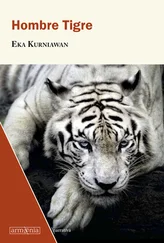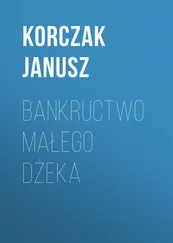“This is what happens when the world is without war, soldiers are reduced to hunting pigs,” Shodancho continued. “Sadrah is so stupid, he wouldn’t even recognize his own asshole.”
He was on the same jungle beach where so many years ago the Princess Rengganis had sought refuge after running away, a wide cape that was shaped like an elephant’s ear, surrounded by more shell-strewn beaches and steep ravines, with only a few sandy stretches. The area was almost completely unspoiled by humans, because ever since the colonial era it had been maintained as a forest preserve, with leopards and ajak . This was where Shodancho had been living for more than ten years, in a small hut just like the one he’d built during his guerrilla years. He had thirty-two soldiers under his command, and civilians sometimes came to help them, and all the men took turns riding into the city on a truck to take care of their needs, but not Shodancho. His longest journey in those ten years had only been as far as the caves, where he meditated, and he only returned to the hut to go fishing and cook for his soldiers and take care of the ajak he had domesticated. This peaceful life had been disturbed by Sadrah’s message. In the jungle there were no pigs, the animals only lived in the hills to the north of Halimunda, and so he would have to go down to the city. For him, to obey that order was to betray his devotion to solitude.
“This pitiful country,” he said. “Not even its soldiers know how to hunt pigs.”
He had last visited the city almost eleven years ago. The KNIL troops were to be disbanded, and he had gone to the city to oversee their departure. “Sayonara,” he’d said with disappointment. “I’m like a fisherman who waits patiently for his catch only to have someone else hand him a basket full of fish.” And then he’d returned to the jungle, along with his thirty-two faithful soldiers, and thus they began their boring duties that would continue for more than ten years. Keeping busy, they protected some smuggling trucks managed by a merchant he had met when they fought the Japanese together. Of course he himself never truly oversaw anything, because his thirty-two soldiers took care of everything. He was usually either out exploring the jungle looking for caves to meditate in, fishing for parrotfish, or practicing his combat moves. He could vanish all of a sudden, a guerrilla technique he had developed himself, and could reappear just as suddenly.
He had developed that technique back when he was still a real shodancho in the Halimunda daidan , when Japan’s Sixteenth Army still occupied the island of Java. He was twenty-years old when a brilliant idea suddenly flashed into his brain: rebellion. The first person he invited to join him was Sadrah, a shodancho in the same daidan , his friend since childhood. They’d began their military careers at the same time in the Seinendan, a youth regiment established by Japan. They’d gone to Bogor together for their military training after Peta was founded, and graduated as shodancho before returning to Halimunda, each to lead their own shodan . Now he hoped to invite his friend to rebel together as well.
“You are asking for the grave,” said Sadrah.
“Yes, the Japanese came from far far away just to bury me,” he said with a chuckle. “Now that’ll be a great story for my children and grandchildren.”
He was the youngest shodancho in Halimunda, and had the puniest physique. But only he had obtained the nickname Shodancho, and when the plans for rebellion were finally in place, he himself led the movement. There were eight shodancho , each with their own budancho, who said they would join, and two chudancho became the guerrilla advisors. The daidancho found out about the plan, but chose to stay out of it and washed his hands of the affair. “I am not a gravedigger,” he said, “especially not for my very own grave.”
“Oh, I’ll dig a grave for you, Daidancho,” said Shodancho, then saw him out of their secret meeting. Once he was gone, Shodancho said to the others: “He prefers to rot to death behind a desk.”
He unfolded a crude map of Halimunda, marking certain Japanese areas with the symbol for Kurawa’s troops, and their own with the symbol for Pandawa, reminding his men: “There is no Bhisma who cannot die and no Yudistira who cannot lie; everyone can die and everyone must fight to survive, even if by lying.” When he was little his grandfather had entertained him with tales of warriors from the Mahabharata, and he lived with such an exuberant passion for war that people often commented, “He should have been the commander of the Sixteenth Army.”
As it turned out, those secret meetings went on for six months before they were confident enough to carry out the rebellion. They counted their weapons and ammunition, reviewed their plans for escape if they failed, and identified their targets if they were able to capture Halimunda. Couriers were sent to get the much-needed support of other daidan . In early February everything was finally ready: the rebellion would be carried out on the fourteenth.
“Maybe I will never return,” Shodancho said when he said goodbye to his grandfather. “Or maybe I’ll come home a carcass.”
As the day of the rebellion approached, he gathered his pistol and ammunition, and double-checked that medicine had been distributed among everyone’s survival packs, in case they became fugitives. He contacted a merchant named Bendo, who he had helped smuggle teak, to prepare food supplies for the guerrillas. He also met directly with the regent, the mayor, and the chief of police, saying that on February 14 there would be a “war simulation exercise,” that all the Peta soldiers in Halimunda would be participating, and no one should disturb them, his code for rebellion. He was alert to the potential of a betrayal.
“Today,” he said at half past two on the day of the mutiny, “will be quite a busy day for the gravedigger.”
The mutiny began by shooting up the headquarters of the Kempeitai, the Japanese army, at Hotel Sakura. Thirty men were executed in the soccer field: twenty-one soldiers and Japanese civil servants, five mixed-blood Dutch Indonesians, and four Chinese collaborators. Their corpses were quickly dragged to the cemetery and tossed without ceremony in front of the gravedigger’s house.
The public was not at all supportive. They locked themselves inside their houses, certain that this was the beginning of an even worse terror: back-up Japanese troops would surely be sent to the city and would leave no survivors. However, the rebels exulted. They took down the Hinomaru, the Japanese flag, and put their own flag back up in its place. They circled the city in a truck, shouting out slogans of freedom and independence and singing songs of struggle. When dusk fell, they disappeared as if swallowed by the night. They knew that the Japanese would hear about the rebellion — maybe all of Java had already heard about it — and as soon as morning came the backup troops would have arrived.
“After all that has happened,” said Shodancho, “we must leave Halimunda until Japan is defeated.” Now they were true guerrillas.
They divided the rebel troops into three groups and split up. The first group, under the command of shodancho Bagong and his chodancho adviser, moved to the western territory to face the Japanese entering Halimunda from that direction. They would push into the no-man’s-land on the perimeter of the district, full of roving thieves. The second group, led by shodancho Sadrah and his chodancho adviser, moved to the dense jungles in the northern hills. The last group moved east, taking control of the river delta and, led by Shodancho, they readied themselves for a battle in the swamps and for attacks of malaria and dysentery. To the south, nature was already on their side in the form of the malicious South Seas. They all moved out before midnight, just as the ajak began to howl in the distance.
Читать дальше











